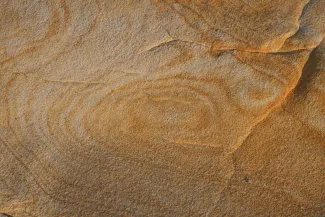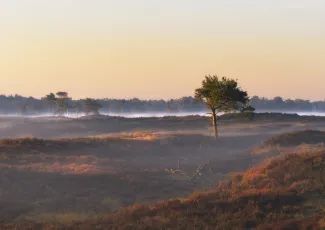Prehistory (... - 3,500 BC)
Ten thousand years ago, geothermal heat was already being used by a number of peoples for bathing, cooking or heating.
For Native Americans, hot springs heated by geothermal heat on their lands had a sacred and protected status. They therefore kept their location jealously hidden from European settlers. Legends speak of healing powers or protection by the Great Spirit. These places were therefore seen as neutral territory.
Antiquity (3,500 BC - 476 AD)
In other parts of the world, geothermal energy is increasingly being used. In China, Korea and Afghanistan, people are experimenting with the possibilities. Thanks to the Greeks, this knowledge reaches the Roman Empire, where the system of underfloor heating is perfected.
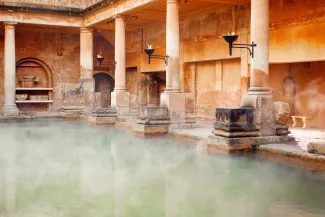
The Romans developed the hypocaust system, derived from hypo (Greek for ‘under’) and caust (Greek for ‘burnt’). With this, they heated the floors of villas and thermal baths. The hot air could spread by building tunnels under the floor. Due to the high cost - slaves were employed day and night to keep the fire going - this was rarely constructed. Only the very rich heated their villa with this system. It is most common in the thermal baths, or hot water baths, that the Romans built all over the Roman Empire, for example in Bath, England. Here they found a natural, geothermal spring that they dedicated to the goddess Minerva. The baths themselves were filled with the hot water of 42° C and the rest of the building was heated with the additional heat from the hypocaust system.
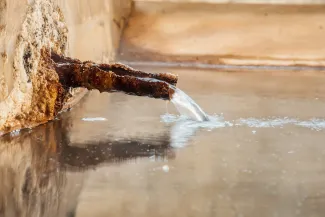
Middle Ages (476 AD - 1492)
The use of hot springs remained and was further opened up in Japan, for example, with the discovery of several geothermal springs from the 8th century onwards. After the fall of the Roman Empire, most thermal springs fell into disrepair, but geothermal springs remained in use.
In the late Middle Ages, the Spanish and French built on the hypocaust system to heat their castles. On the Spanish plateaux of Catalonia, you can still find houses equipped with this system they call the ‘gloria’: this is a well that comes out at the side of the house where you light a fire in the morning and then push it into the well so that the heat can spread throughout the house.
In Chaudes-Aigues, France, people went a step further in the 13th century. This region is home to one of the hottest hot springs in France, with temperatures of up to 82° C. The Romans had already discovered these springs, but in the Middle Ages they were also used as the first heat network to provide heating for the historic town.
Unfortunately, however, this application was an exception: cheap fuels such as wood, peat and coal from mines meant that geothermal energy was not immediately regarded as a full-fledged heat source.
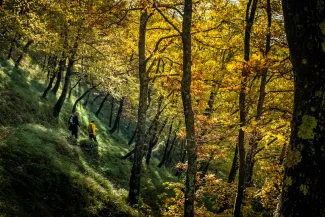
Newest era (1789 - 1945)
During the Industrial Revolution, the demand for fuel was increasing, but geothermal energy was never considered because of limitations in technology.
Closer to home, in the region around Mons, hot water was first tapped as early as the 19th century. A little later, a second drilling followed around Saint-Ghislain, where water with a temperature of 73°C was pumped from a depth of 2.5km. But that was all.
Abroad, people discovered the potential of geothermal heat more quickly. In 1930, the first district heating network was built in Reykjavik. In Boise, Idaho (USA), geothermal heating was started in 1892 and just under a hundred years later it was possible to heat almost the entire city this way.
Italy again took the position of pioneer when the first geothermal electricity generator was designed in 1904. Prince Piero Ginori connected a steam engine to a natural steam source in Larderello, Tuscany, discovering the potential for geothermal heat to extract electricity.
However, the technology was not yet advanced enough to return the water to the layer of earth from which it was extracted. With natural steam or hot springs, this was not possible.
Contemporary era (1945 - now)
After World War II, traditional fossil fuels were still cheaper than the research and construction of geothermal-based heat and power networks. However, due to Iceland's pioneering role, knowledge continued to develop and, from the early 2000s, it was put to full use. Other countries followed, including Belgium.
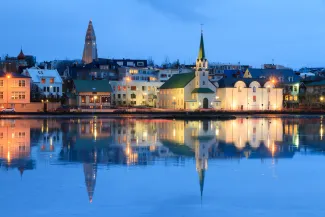
In 2015, research was conducted in our Flemish Kempen region on the potential of geothermal heat, with a circular system: the water that is pumped up is re-injected into the layer of earth from which it came. Tests at the Balmatt site in Mol are positive, which means that the next phase of research has now started: injecting the cooled water does have some consequences. By putting pressure on the injected water and because the rock can shrink very slightly when cooling, this can cause small movements in the deep subsurface. In 2019, the first steps were therefore taken to further investigate this seismicity.



